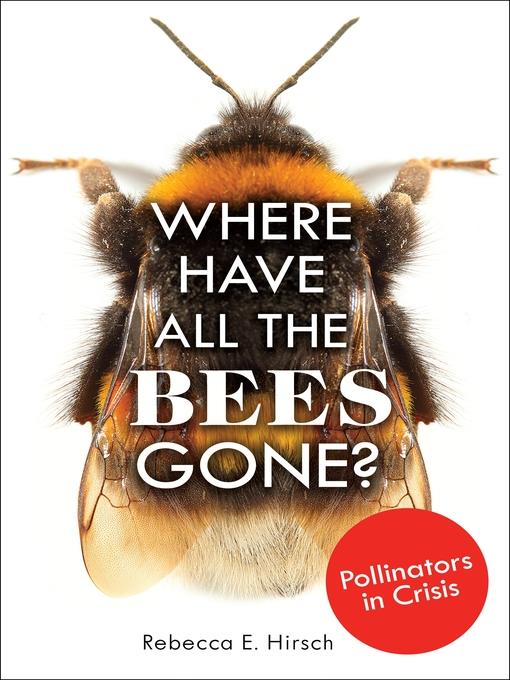
Where Have All the Bees Gone?
Pollinators in Crisis
فرمت کتاب
ebook
تاریخ انتشار
2020
Lexile Score
1060
Reading Level
6-9
نویسنده
Rebecca E. Hirschشابک
9781541595941
کتاب های مرتبط
- اطلاعات
- نقد و بررسی
- دیدگاه کاربران
نقد و بررسی

December 1, 2019
Gr 5-7-Though all the bees haven't gone anywhere, and, as the author notes, even the colony collapse disorder that threatened to wipe out the commercial honeybee industry a few years ago has abated, Hirsch reports that researchers have discovered major declines in the numbers of certain North American bee species. The cause is hard to pin down, but the author points to improper use of neonicotinoid insecticides, habitat destruction, and evidence that commercially raised bees are spreading virulent forms of infections, diseases, and other parasites to their indigenous relatives. Why does it matter? "Without bees, we wouldn't have food." What's to be done? Hirsch suggests that curious readers dig into her generous selection of print and online resources to raise awareness, plant a flower garden, and perhaps leave dried perennial stalks out for solitary bees to winter in. Still, along with clearer understandings of bee evolution and life cycles, and how pollination works, readers will come away concerned. Frequent sidebars, plus a mix of diagrams, flower pictures, and close-up photos of a variety of different types of bees, enhance the presentation. VERDICT An informative survey for students of biology and environmental science and just a tick denser in language and content than Emily Morgan's Next Time You See a Bee.-John Peters, Children's Literature Consultant, New York
Copyright 2019 School Library Journal, LLC Used with permission.

December 15, 2019
This slim volume details what scientists know about the long history and potential future of an important pollinator. Hirsch (Garfield's Almost-as-Great-as-Doughnuts Guide to Math, 2019, etc.) opens the book with a narrative about Robbin Thorp, an entomologist who, in the 1990s, began monitoring habitats in Oregon and California for the now-vanished Franklin's bumblebee. From this specific, vivid scene, the text zooms out: Chapter 2 discusses how bees likely evolved, and Chapter 3 lists other pollinators and describes several kinds of pollination. The remaining chapters cover topics including the physical structure of bees, the pesticides that kill them, and some efforts being made to ensure bees' survival. The book ends on a hopeful note, with suggestions for things readers can do to help bees. Chapters are illustrated with color photographs and diagrams, and some include sidebars or entire pages' worth of inserts about things like assisted reproduction. Details about scientists' work will intrigue some readers, but the episodic stories become a bit difficult to track toward the end. Hirsch's main point--that bees are pollinators who deserve our respect and protection for their role in growing the food we eat and feed to domestic animals--is woven throughout the text. Accessible and concise, this volume teaches an important topic responsibly without being dry. (author's note, glossary, source notes, selected bibliography, further information, index, photo credits) (Nonfiction. 12-16)
COPYRIGHT(2019) Kirkus Reviews, ALL RIGHTS RESERVED.

Starred review from December 1, 2019
Grades 7-11 *Starred Review* We must save the bees to save ourselves, biologist Sheila Colla is quoted here as saying, and this sentiment buzzes through the pages of this apiary study. In the late 1990s, retired entomologist Robbin Thorpe noticed a sharp decline in the Franklin bumblebee population in southern Oregon. His alarm rose when, by 2005, he found none. Other entomologists began to study all bee populations. To their dismay, bee decline is everywhere. What is happening? Hirsch takes readers through the life cycle of bees, their important role in pollination, and presents reasons for their decline. In her well-balanced and objective presentation, readers find three main issues facing bees (and all pollinators): parasite infection, pesticides, and climate change?all related to humans in some respect. Correlation among the issues has led scientists, government agencies, and ordinary citizens to seek ways to slow the decline. Hirsch's final chapter offers ways individuals and community groups can provide pollen and nectar sources for all types of bees. Color photographs and specialized text inserts enhance the narrative. Detailed source notes, a selected bibliography, and further readings give additional valuable information. An important resource for all libraries.(Reprinted with permission of Booklist, copyright 2019, American Library Association.)

























دیدگاه کاربران